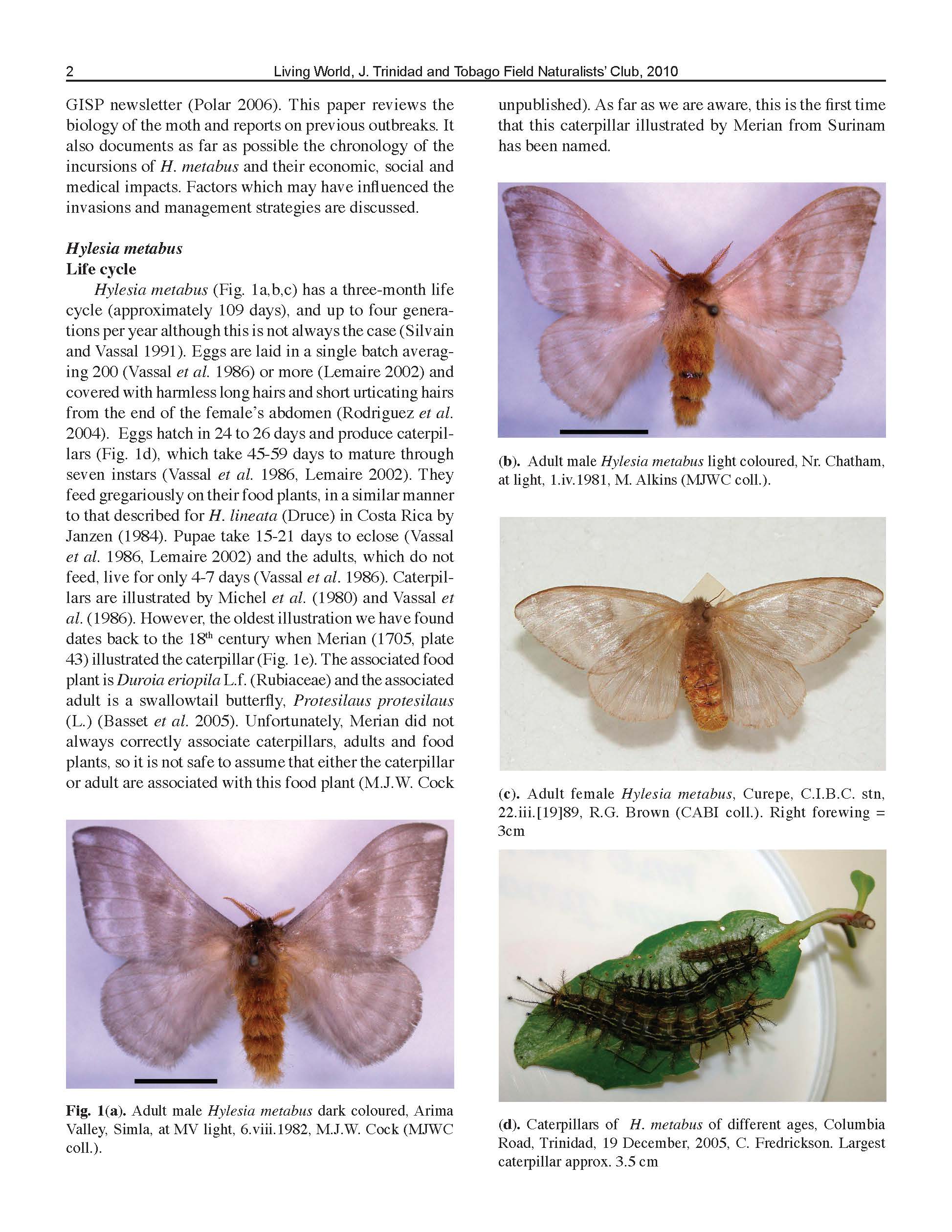Invasions of Hylesia metabus (Lepidoptera: Saturniidae, Hemileucinae) into Trinidad, West Indies
Keywords:
Invasive species, mangrove, migration, lepidopterism, moth, VenezuelaAbstract
Hylesia metabus (Cramer) is a saturniid moth of public health importance. Contact with the abdominal hairs of the adult females causes dermatitis, eye lesions and respiratory tract manifestations. It has been reported from the northern parts of South America, but not Trinidad. However, we have shown from specimen data that the moth is part of the natural fauna and widely distributed in Trinidad. On four occasions, between July, 2005 and May, 2006, H. metabus invaded the southwestern coastal communities of Trinidad. Since then, no invasions have been reported up to March, 2010. This paper reviews the published and grey literature on H. metabus, chronicles the movement of the moths and reports on its socio-economic impact on coastal communities in Trinidad. We postulate that the observed moths originated from South America rather than Trinidad and attempt to explain the frequency and timing based on biological, ecological and environmental factors. Possible management strategies are discussed.

